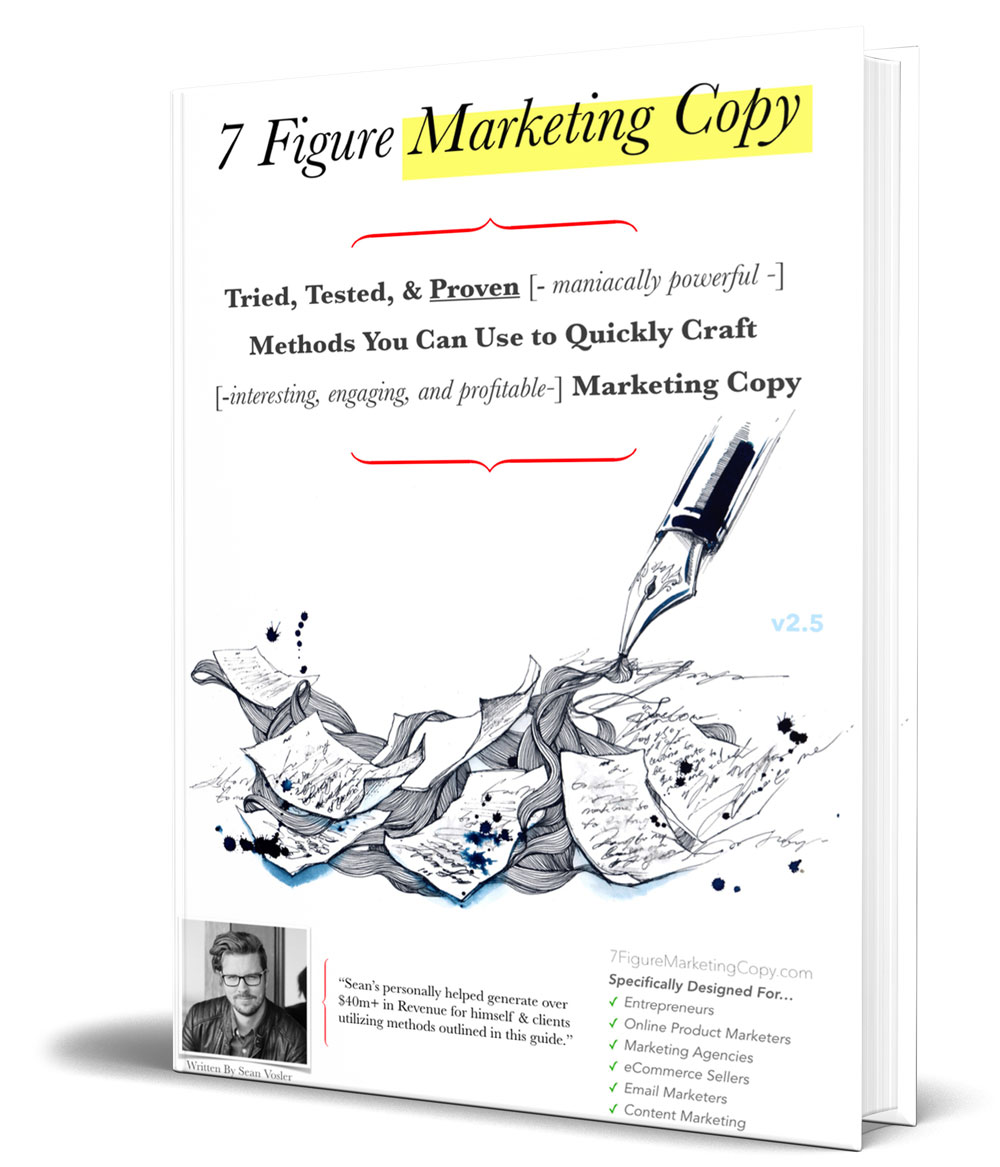The 3 Levels of Delivering Quality “Copy Judgement”
How to tell the difference between good copy & bad copy, the answer lies in music…
[ Written For Freelance Professional Copywriters ]
Normally you’d think quality marketing copy is determined solely by how customers respond to the words, but there’s more to it than that.
In this post, I’m going to share with you the 3 “perception” levels you need to develop so you can determine IF you have good or bad copy before you spend a dime on testing.
It’s also good to understand these perspectives so that you can take feedback from clients correctly. Do they really understand the mechanics at work, the things that drive conversion? If not, you will need a clear answer for why you’ve written the way you’ve written before you change your copy to please their ‘tastes’ (at the cost of conversion rates).
Before we look at the three levels let’s explore the question from a different angle…
Q: How do you tell the difference between a good song & a bad song?
“Judgment” can be delivered from 3 different types of perspectives…
- Someone who has no love for that genre of music
- The addict who lives to hear that type of music
- The professional musician who looks at music structurally and technically.
These 3 people will judge music very differently.
There is a particular kind of music you love that I’m sure you’ve heard some people tell you, “I don’t like that kind of music.” And then you’re like, “No way! This is a great song!”
A professional may not enjoy a genre of music, but can appreciate it from a technical perspective. If you love pop music but hate medal you’re going to have a difficult time appreciating even “the best” metal song. And if you absolutely love bluegrass music you’re going to be able to distinguish “decent” bluegrass from incredible bluegrass.
Same with marketing copy.
In copy, these 3 kinds of judges include:
- The Passive Reader
- The Problem-having/Problem-Solution Reader
- The Professional Reader
To the Passive Reader, good copy is mostly about writing that engages them, hypnotic writing, vivid descriptions and narratives, clever wordsmithing and your ability to get them curious. Basically getting them to keep reading almost against their will qualifies your copy as good copy.
Then we move on to the The Problem-having/Problem-Solution Reader. This reader is more invested in the offer you are making. They are invested in the promise you are making to them. They desire the solution you are selling to them because it concerns a problem in their lives. They are your target audience. The Problem-having or Problem-solution Reader doesn’t care how clever or fancy your writing is. In fact, if your copy is good to them, they won’t notice your style, they’ll only notice that it’s speaking to them. If your copy can make them desire what you want to sell, it is good copy.
Which brings us to the last person on the list, the professional reader. This is your fellow copywriter, or even a client who THINKS they’re a copywriter (hah). These ones might not be heavily invested in the solution you are selling, and they might or might not be personally impressed with your writing, but… they will notice your use of good copy techniques. It’s important that when your getting feedback from a fellow professional you listen for their advice on technique more so than content.
Questions That Help You Evaluate Your Own Copy…
- How appealing is your ‘Big Idea’ when you break it down into its components?
- How compelling is your lead headline & subheadline?
- Do you do a successful job of sharing proofs for your claims to establish a credible argument?
- Is your copy continually building desire in the reader?
- Are your bullets weak and needing some added angst?
The more you wield these techniques the right way, the more they will mark your copy as good copy.
So how do you use this information to start creating good copy?
Remember: Your job as a copywriter is to sell. So you are not supposed to be concerned with how “Passive Readers” admire or dislike your writing.
Copy admiration is subjective, but it’s results are objective.
Gary Halbert was known to tear up his work if the only thing his readers admired was the writing. So don’t concern yourself with impressing Passive Readers.
In fact, don’t aim at impressing anyone… not even the Professional Readers. Professional readers don’t care about you impressing them. They just want you to keep growing.
And you shouldn’t only aim at creating great offers. ANY SALES PERSON – no matter his level of skill – who has a GREAT OFFER can sell the solution. So your business is not to let the Problem-having or Problem-solution Reader be your sole judge.
Instead here’s what you should do: Focus on developing & expanding great copy techniques. Techniques from researching to developing great offers to structuring great copy… if you can get good at these techniques every single day, you will eventually impress ALL THREE KINDS OF READERS.
Want to replicate great technique? Study great copywriting.
So every single day, take out ONLY the best sales letters (controls preferably), study them, break them down, write bits in your own words.
Ask your invisible study partner questions like, “What is he actually selling here?”… “Why didn’t he sell it another way?”… “How would I have sold this instead?”… “I think I see what he did there! Isn’t that a clever way to build desire?”… “Knowing what I may know about that period of time, why would my way of selling it have failed?”… “Hmmmm… I think he knew the best way to sell this product was to first build value for it with all these testimonials, right?”
At the end of the day, your deliberately practiced hand will naturally start to weave good copy…
Other Passive Readers will start to notice it. Other Problem-solution Readers will start to notice. And your progress will not escape the notice of other Professional Readers.
Put another way, in order to write the best copy you must be able to read your copy from ALL THREE KINDS OF READERS perspective. Doing so will help you develop a natural intuition to tell the difference between good and bad copy.
Crafted by Increase Academy Contributor…

Copywriter, author, & marketing consultant striving to educate those who love the craft of marketing as much as I do!
Recommended Reading: 7 Figure Marketing Copy Guide // everything you need to write great copy from scratch
Want to learn together? Sit Down With Me To Write A Brand-New Sales Letter From Scratch – Click here for details

 Let me send you a boatload of copywriting tips...
Let me send you a boatload of copywriting tips...